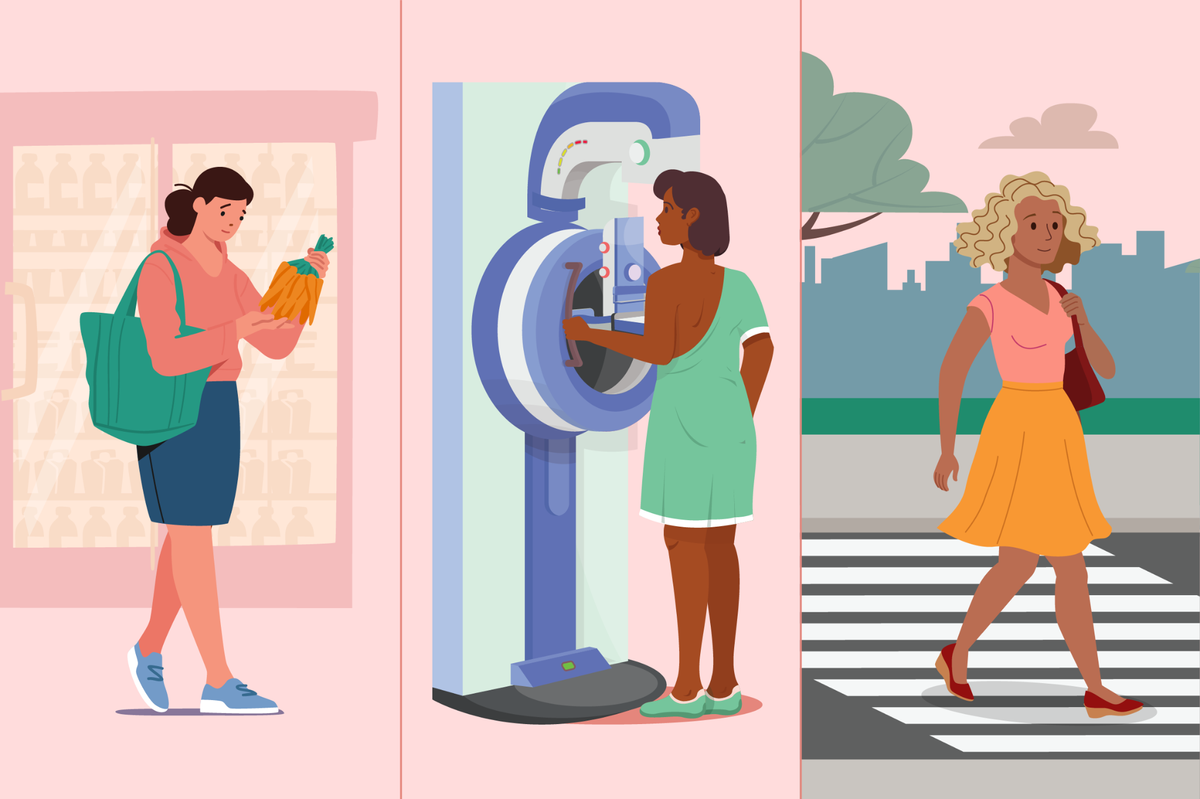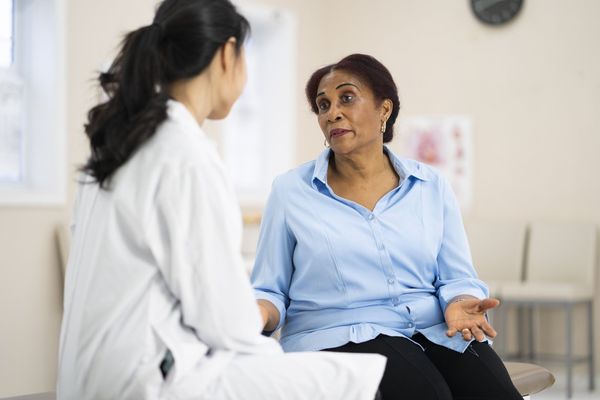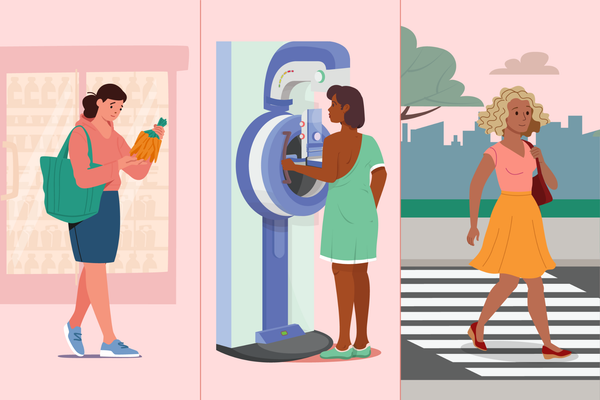Breast cancer is the most common type of cancer worldwide. The conditions in the environments where people live, work, learn, play and worship, also called social determinants of health (SDoH), affect breast health and health outcomes.
In the United States, 1 in 10 people live in poverty, which means they often have less access to healthy foods, healthcare, housing, education and safe living conditions.
Economic stability
- What is it?
- Job opportunities with steady income
- How does economic stability affect breast cancer?
- Lower socioeconomic status decreases access to healthcare services and comprehensive breast cancer treatment. Less access to healthcare and treatment leads to an increased risk of aggressive premenopausal breast cancers, as well as late-stage diagnosis and poor survival rates.
Education
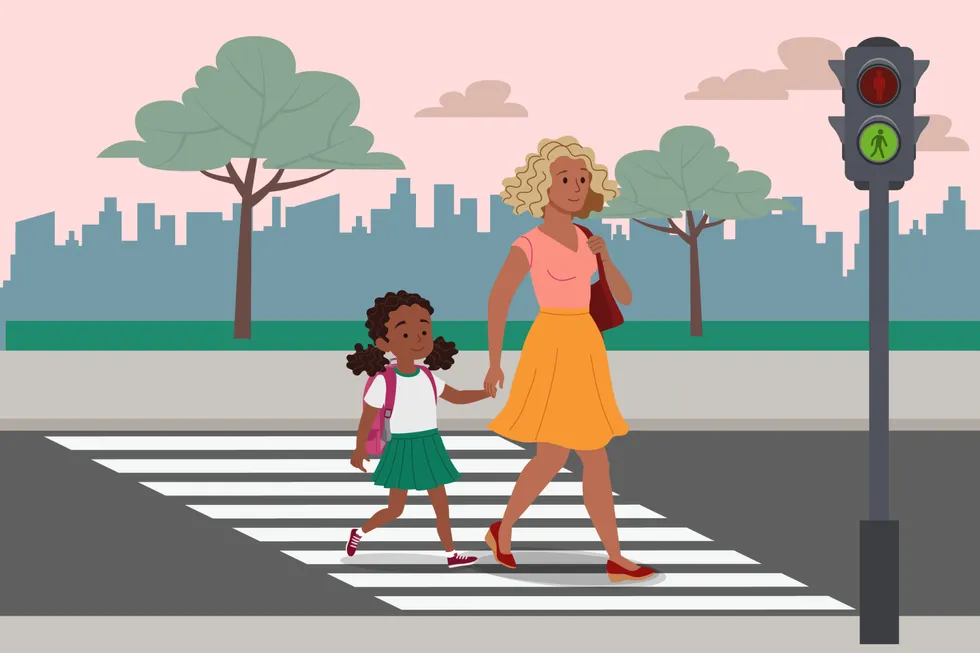
- What is it?
- Access to early childhood education, higher education and vocational training
- How does education affect breast cancer?
- The Centers for Disease Control and Prevention (CDC) found lower educational attainment is associated with lower screening rates for breast cancer. Lower screening rates lead to worse outcomes. Breast cancer screening and early detection increase the survival rate for breast cancer.
Neighborhood and physical environment
- What is it?
- The natural and built environment of a community, such as water and air quality, housing features, transportation, physical activity opportunities, and walkable streets
- How do lack of safe, convenient places to exercise affect breast cancer?
- When it’s hard to be physically active, people are less likely to exercise. Studies show that a lack of exercise increases risk of breast cancer.
- How does lack of transportation affect breast cancer?
- Living in areas that lack resources and living far from medical facilities make it difficult to get screening and care. Lack of access to screening leads to later stage diagnosis, and lack of transportation makes it harder to get to treatment.
Food Access

- What is it?
- Access to healthy food options
- How does access to healthy food options affect breast cancer?
- Limited access to fresh foods and fruits, vegetables, and whole grains makes it difficult to eat a nutritious diet, which can help reduce the risk of breast cancer.
- Limited access to a healthy diet increases the risk for obesity, cardiovascular disease and diabetes. These conditions are associated with an increased risk of breast cancer.
Community and social support
- What is it?
- Support systems, communities free of discrimination and racism
- How do community and social support affect breast cancer?
- Support systems such as healthcare providers, friends, family and others can help bring information, shared experiences and advice to those diagnosed with breast cancer. Studies show that support systems and supportive communities improve breast cancer treatment outcomes and can lower stress levels from cancer diagnoses and improve overall emotional well-being.
Healthcare
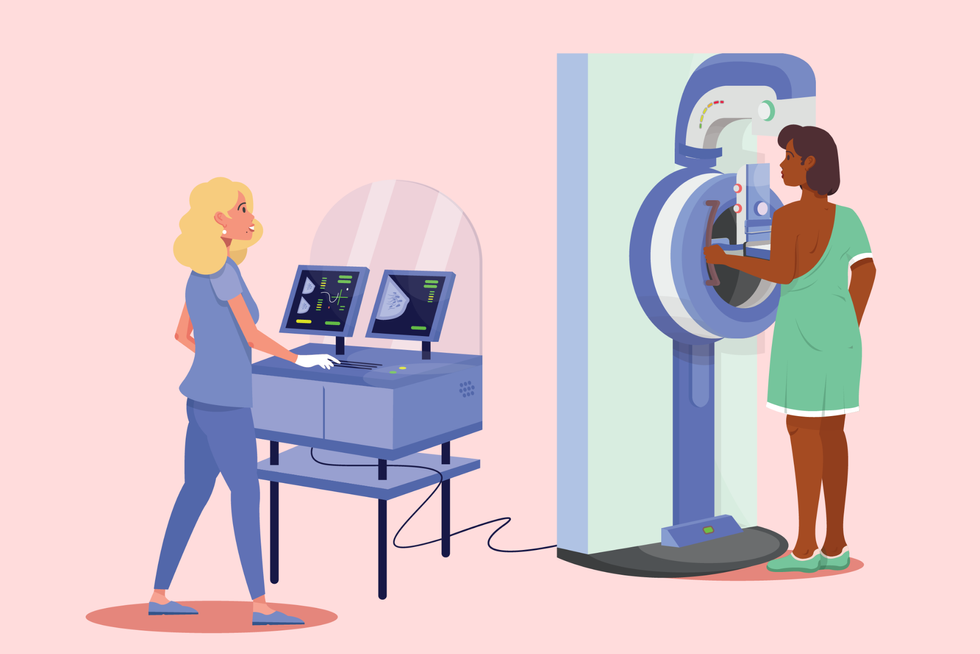
- What is it?
- The availability of mammograms and other tools for breast cancer prevention, screening and treatment; equal treatment from healthcare providers, health insurance and access to healthcare
- How does quality of healthcare affect breast cancer?
- The quality of the resources available to you can affect your prognosis. Lack of good insurance coverage and/or lack of a primary care physician can keep people from getting care and delay diagnosis. Implicit provider bias and lack of access to modern equipment and treatment can lead to poor outcomes.
This resource was created with support from Merck.
From Your Site Articles
- How Health Inequities Put Women of Color and Rural Women at Risk ›
- Social Determinants of Health, Health Disparities and Health Equity ›
- Breast Cancer: What You Can Do to Lower Your Risk - HealthyWomen ›
Related Articles Around the Web

